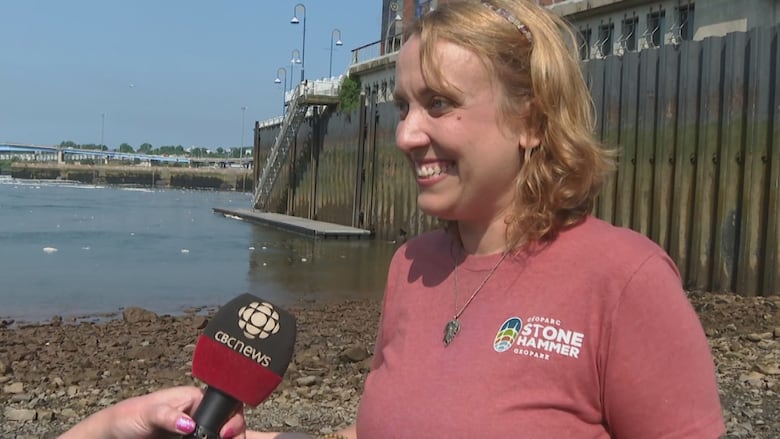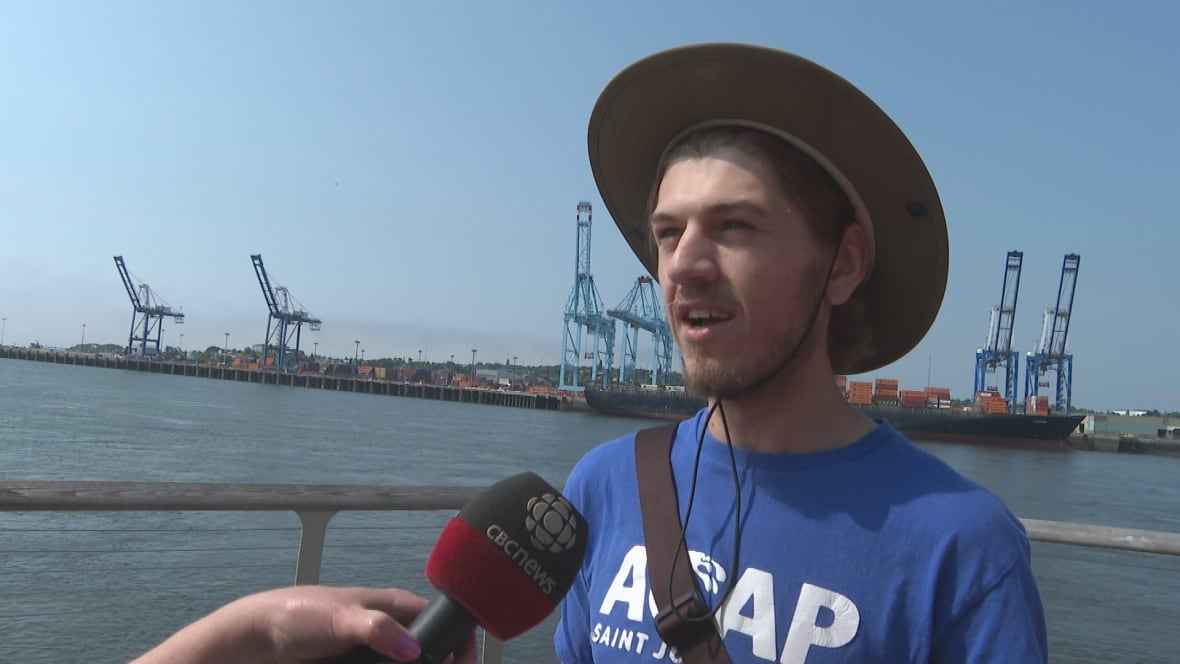How climate change in the last Ice Age created the Bay of Fundy tides
Stonehammer scientist tries to put geology and climate change in historical and contemporary contexts

Climate change feels like a contemporary issue, but the Bay of Fundy tides have roots in changes that happened at the end of the last Ice Age nearly 12,000 years ago, says a New Brunswick geoscientist.
"Climate change is something that happens over and over again," said Catrina Russell, the education co-ordinator for Stonehammer Geopark.
"The climate was always changing based on plate tectonics, the orientation of our continents. So at the end of the last Ice Age, a huge amount of water entered the ocean from that melting ice, raising sea levels and creating our tides."
Russell is a researcher and educator for the 2,500-square-kilometre geopark in the Saint John area of southern New Brunswick.
She recently conducted a tour called Rockin Uptown Tour with Jack Quirion, a biologist and climate change projects co-ordinator for ACAP Saint John.
They both try to place geological and climate science in their historic and contemporary contexts, so that people understand the impacts on their lives.
Russell said the region is still feeling the effects of the end of the last Ice Age, with rising temperatures resulting both from both human-made climate change and the natural changes in the environment.
"What's happening now is that we are still at the end of this last Ice Age, so temperatures are still rising because of that," she said. "But what's happening here is we have a much higher rate."
Russell said the geology of the area informed decisions made by earlier generations that continue to shape the lives of the people who live here now.
"Geology is the foundation to everything we do, everything we are, it shapes our experience," she said. "Those first Loyalists landing right here on this site, they may not have stopped here if it hadn't been for the geology, for the tides."

Over the decades, people who settled in Saint John altered the landscape themselves, doing infill projects on the waterfront to expand the footprint for residents and industry.
"Looking at how much the landscape has changed over the last 200 years, and thinking about the hundreds of millions of years of history that have shaped that, it's really interesting," she said.
Quirion is particularly interested in rising sea levels and how they will affect the natural shorelines and the ones created by infill projects.
Saint John is still doing new developments and there are many existing ones affected by erosion and rising levels.
"I've heard some voices in the community concerned where we're spending so much effort developing the waterfront," Quirion said.
"We do have to be careful that we're not building things that might eventually end up underwater."
ACAP is currently doing research into climate change impacts within the Stonehammer region, collecting information and coming up with mitigation strategies to share with the community.
"We'll be looking at preventing erosion or slowing the rate of erosion," he said. "We'll be looking at maybe some ways that we can address this increasing flooding that we're gonna have to deal with."
Find natural solutions to erosion and flooding
He said they want people to take action that's good for the environment and area residents.
"A lot of times people will want to put up a big rock wall on the coastline to prevent erosion and flooding," Quirion said.
"But that's not necessarily the best idea. If you put up a rock wall, it just displaces that wave impact to the property next door. What we're finding is there are better solutions using plants, a combination of both built infrastructure and nature-based solutions."
With files from Information Morning N.B.

